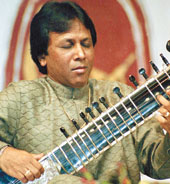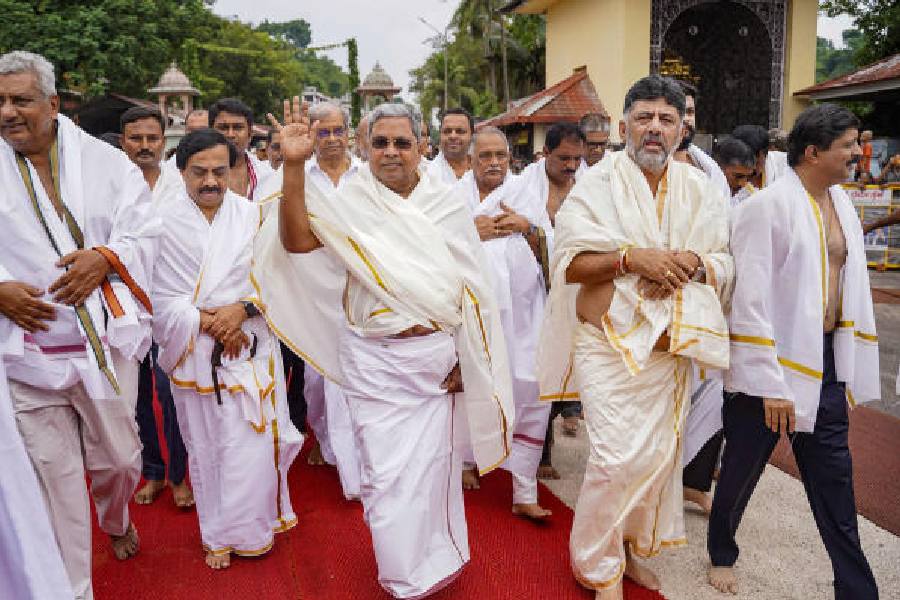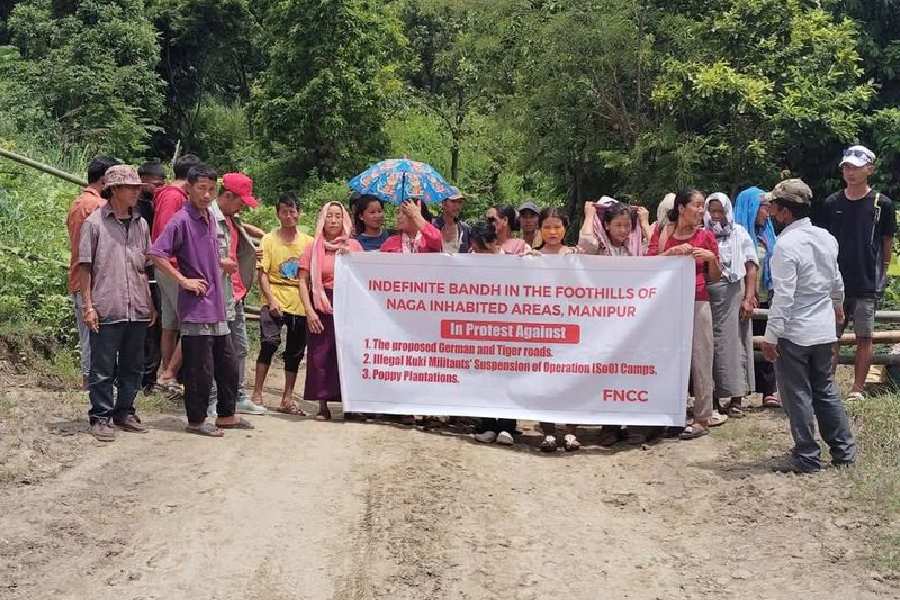 |
| Bihu dancers on stage (Pictures by Sanat K. Sinha) |
To preserve, propagate and revive different dying dance and music forms, Eastern Zonal Cultural Centre (EZCC) hosted ‘Guru-Shishya Parampara’, a three-day festival featuring 17 groups of artistes from West Bengal, Orissa, Bihar, Jharkhand, Assam and Manipur at Bharatiyam, Saltlake (November 7-9).
In spite of presenting classical as well as folk and tribal art, the festival failed to go beyond stereotypical patterns and look beyond the obvious.
The programme started off with folk songs and dances of Bengal. The Sambalpuri dance of western Orissa, under the guidance of Ranjan Kumar Sahu was a colourful and lively presentation. Compositions like Dal khai, Nachnia and Bajaniya were spontaneous and spirited. However, keeping the rustic root intact, a touch of imagination could have been incorporated to make the recitals more attractive. Mayurbhanj and Seraikella Chhau of Jharkhand were disappointing. The latter, depicting the dance of Hara-Parvati before the birth of Kartikeya, failed to create a strong visual approach. Repetitive and boring movements made the presentation slow and stagnant.
This was followed by a nice concept, called Phool-bhramara. The students of Durga Charan Ranbir danced the traditional items of Odissi with great enthusiasm. The artistes skilfully executed the grammatical format with strong footwork and gentle body movements.
The most attractive presentation of the festival was Bandha nritya, an ancient dance form of Orissa, performed by gotipuas (young boys who dress themselves as girls). The little dancers, groomed by Maguni Das, received a roaring applause for their brilliant acrobatic feats, gymnastic movements and pyramidal structures.
Prashana Gogoi brought out the true festive spirit of Bihu, a dance form of Assam, in his choreography. His students displayed considerable mastery over technique. Their delightful movements with indigenous instruments like dhol, pepa (made of buffalo horns) along with stunning red and golden costumes created a festive ambience. Thang ta, the martial art of Manipur, stole the heart of the audience with bold movements based on veer rasa. However, their abhinaya, based on Jayadeva’s ashtapadi Haririha mugdha badhu ni kare, lacked warmth and involvement. And the chorus should have been more synchronised.










